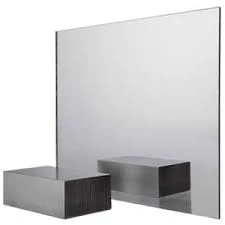

The Allure of Gray Reflective Glass A Modern Architectural Staple
In the realm of modern architecture and design, materials play a pivotal role in shaping the aesthetic and functional qualities of buildings. Among these materials, gray reflective glass has emerged as a favored choice, lending a contemporary edge to various structures while meeting the demands of both design and practicality. This article delves into the characteristics, advantages, and applications of gray reflective glass in the architectural domain.
Understanding Gray Reflective Glass
Gray reflective glass is a type of glass that has been treated with a special coating to enhance its reflective properties. The glass typically appears gray when viewed from the exterior, offering a sleek, sophisticated appearance. Its reflective capabilities allow it to bounce back a significant portion of light, making it an ideal choice for buildings seeking to reduce glare while still allowing for abundant natural light to enter.
One of the standout features of gray reflective glass is its versatility
. It can be used in various thicknesses and configurations, making it suitable for everything from windows and facades to skylights and curtain walls. This adaptability enables architects and designers to incorporate it seamlessly into various design philosophies—be it minimalist, industrial, or contemporary.Benefits of Gray Reflective Glass

1. Energy Efficiency One of the most significant advantages of gray reflective glass is its ability to improve energy efficiency in buildings. By reflecting sunlight, it reduces the heat gain within a structure, which can lead to lower energy consumption for cooling. This characteristic is not only beneficial for the environment but also translates into cost savings on energy bills.
2. Enhanced Privacy The reflective surface of gray glass provides a level of privacy to occupants inside a building while maintaining an outward view. This feature makes it an attractive option for offices, residential buildings, and other structures where discretion is desired without sacrificing natural light.
3. Aesthetic Appeal Gray reflective glass lends a modern and sophisticated look to architectural designs. Its sleek appearance can create a striking contrast against the more organic textures of neighboring materials, such as brick or wood. The interplay of light and shadow on its surface can contribute to dynamic visual interest throughout the day.
4. UV Protection Another advantage of gray reflective glass is its ability to filter harmful ultraviolet (UV) rays. This feature helps protect interior furnishings from fading, making it a wise choice for commercial spaces, museums, galleries, and homes alike.
5. Durability Gray reflective glass is